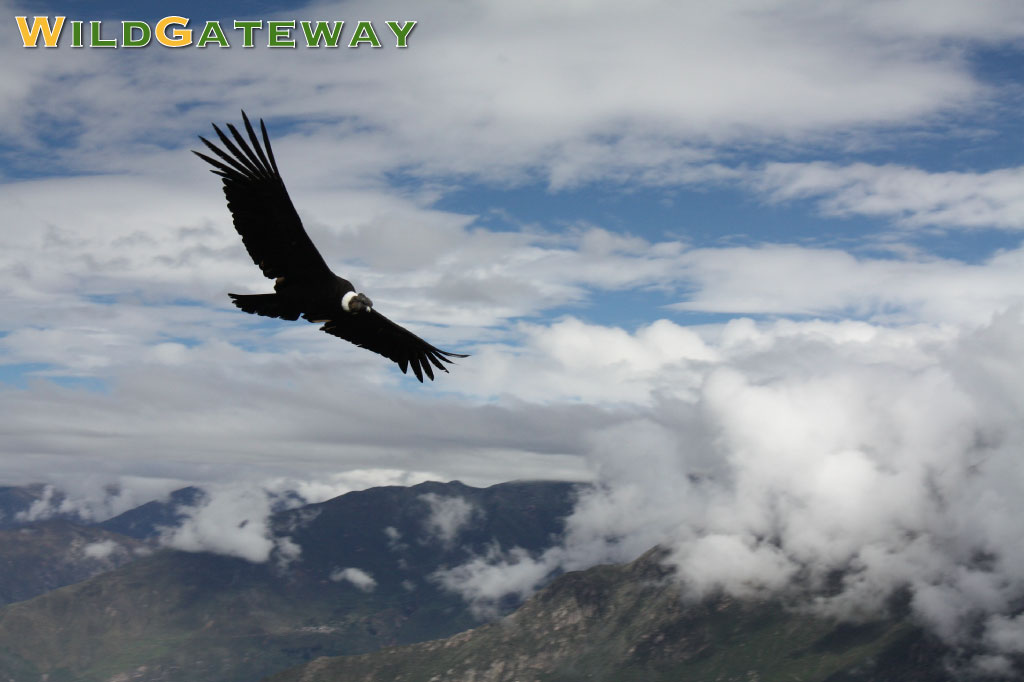Condors are ‘once in a lifetime’ birds for many birdwatchers. On a trip to Peru’s Colca Canyon, Jo Walker discovers the appeal of these graceful giants.
[mc4wp_form]
Condor Watching in Peru
“Without her, his life was empty. There was nothing left. The love of his life had gone, and his heart ached with grief. One day, he could bear the pain no longer. He went to the highest cliff top he could find, and jumped.”
Rodrigo shrugged nonchalantly, before spitting a soggy blob of saliva-soaked coca leaves out of the bus window. We stared at our guide in transfixed silence.
“Condors mate for life you see. It is hard for them to lose their partner, just like humans. Their relationships are very meaningful.”
I couldn’t believe what I was hearing. Vultures had always struck me as rather ghastly creatures, shamelessly pecking away at decaying carcasses without a second thought for the poor life that had once inhabited it. Yet suddenly I found myself swooning over the romantic nature of these bloodthirsty scavengers.
As I sat pondering this new and unexpected information, the rickety bus trundled on. The sun had just begun to peep over the undulating skyline, and the shimmering beams of dawn illuminated the trillions of dust particles surrounding us.
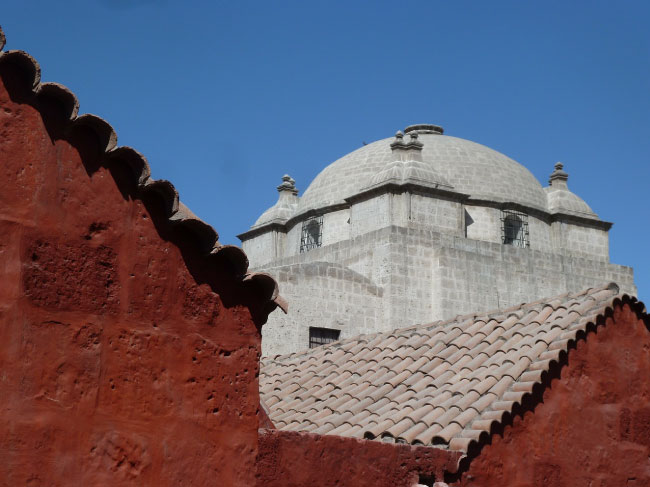
We had not long left the illustrious ‘White City’ of Arequipa, a colonial metropolis famous for the creamy volcanic rock that plasters every surface of its architecture. Now, as we wound our way across the Altiplano and toward the towering mountains, images of courting condors danced in my head. Even the perilous potholes on the road did nothing to shake my thoughts. I could not get Rodrigo’s story out of my mind.
We were on our way to Colca Canyon. At a dizzying depth of 3270 metres, Colca is renowned for being one of the world’s deepest canyons. It is also home to one of the largest birds on Earth – the Andean Condor.
Until this moment my excitement had been fuelled by thoughts of the canyon itself. As one of Peru’s great natural wonders, the promise of spectacular views and jaw-dropping descents had filled me with eager anticipation for days. Yet now all I could think about were the fascinating birds that inhabited the canyon. The love story of the condor had captured my imagination, and I was desperate to glimpse one.
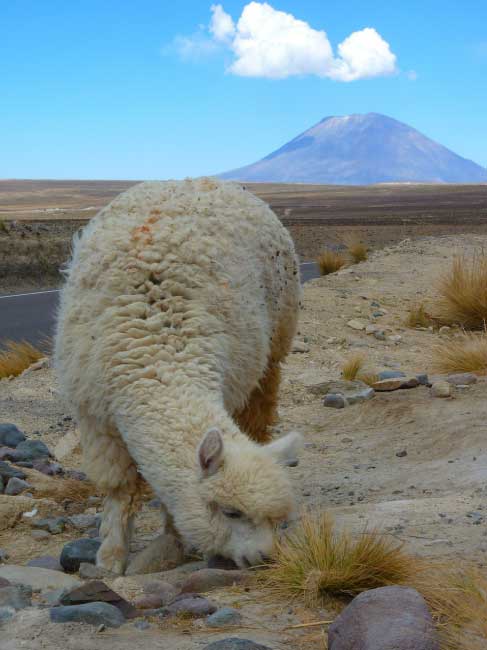
As the drive continued we passed the nature reserve of Pampa Cañahuas, where grazing llamas, alpacas and vicuñas peppered the landscape. We gazed at a host of volcanoes flanking the distant horizon, and Rodrigo described the legendary Valley of Volcanoes and the eighty-six volcanic cones that dwell within it.
After several hours of bouncing across barren landscapes and snaking between craggy mountains, we reached Patapampa Pass. At 4910 metres above sea level, it is the highest point between Arequipa and the canyon town of Chivay. At this staggering height my head had become a little hazy, and a wave of nausea washed over me as I stepped off the bus. However, as the surrounding vista engulfed me, my mild queasiness paled into insignificance.
Colossal snow-capped peaks devoured the rippling skyline, the white glare of their frosty summits blinding to the eye. The sky was a brilliant blue, dappled with candy-floss clouds that cast shadows on the rocky terrain beneath our feet. This, I thought, is the land of the condor. As I visualised them gliding majestically between the jagged peaks, Rodrigo pointed out the lofty pinnacle of Ampato, a dormant stratovolcano soaring toward space at an incredible height of 6288 metres.
Every inch of the enveloping panorama dazzled me. ‘Where else would one of the planet’s biggest birds reside,’ I thought, ‘but here, amidst surroundings of such magnitude?’ My desperation to sight a condor in its natural habitat was growing with each passing moment and, as we returned to the bus to make our steep descent, I could barely contain my excitement.
We quickly dropped down into the Colca Valley and advanced toward the bustling town of Chivay. Local artisans lined the roadside, their vibrant traditional dress and colourfully embroidered souvenirs emblazoning the landscape.
Rodrigo explained that we would continue on to the quieter town of Cabanaconde, from where we would venture into the depths of the canyon on foot. Then, the following morning we would make our way to the renowned viewpoint of ‘Cruz Del Condor’ where, hopefully, we would catch a glimpse of the carnivorous lovebirds in flight.
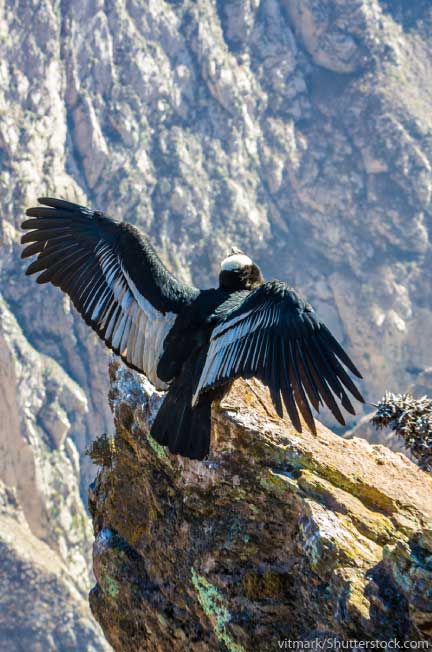
Cabanaconde
Cabanaconde is situated on the left bank of the Colca River, and is one of the last villages in the Colca Valley. As we wound our way toward it I sat, my nose pressed against the dusty bus window, marvelling at the imposing views.
This traditional village sits nestled amidst nature’s giants. Craning my neck to study the gargantuan peaks looming above us, I imagined how minuscule we must appear from such heights. Mere specks of colour scurrying like ants beneath these almighty beings, it was easy to see why local people treat the mountains as sacred.
The land is a life source for people here. Maintaining their ancestral pre-Inca traditions, the villagers cultivate agricultural terraces that are carved into the hillside, growing a unique type of maize known as Cabanita corn. The simple yet ingenious design of these stepped terraces has been used for centuries. Passing local farmers, stooped and tending to their crop, it felt as though we had stepped back in time.
As we explored the village, we saw a gaggle of women wearing hats of head-turning quality. Rodrigo explained that the explosions of colour and extraordinary detail of the embroidery on these hats was inspired by the flora and fauna of the Colca Valley. I wondered whether stitched portrayals of the Andean Condor might feature on some of these flamboyant pieces of headwear.
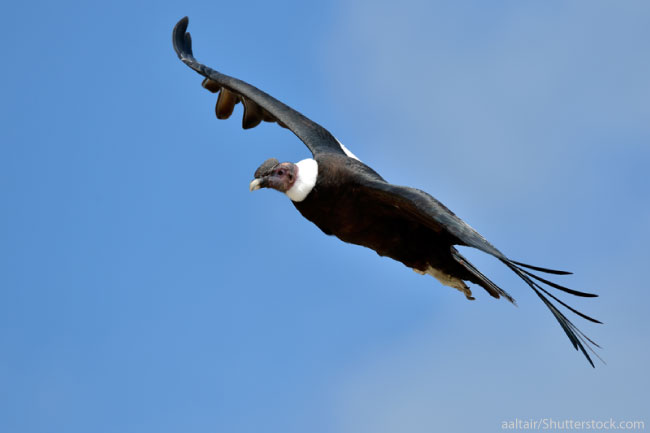
Colca Canyon
Despite the distance we had travelled, it was still morning, and the time had come for us to enter the depths of the Colca Canyon on foot. As the snow-capped peaks swelled above us, the rusty rock faces of the canyon swallowed us into its arid abyss. My preoccupation with sighting a condor dissolved temporarily, as every single one of my senses became absorbed by the breathtaking sights surrounding me.
Plunging ravines and jagged crevices penetrated the canyon walls, which plummeted to the ground in vivid strokes of flaming orange and red. The land was adorned with crooked cacti that jutted out of its surface at unusual angles, creating an otherworldly atmosphere. Far below, the Colca River weaved like an unending glittering serpent.
As we trudged deeper into the chasm we met dozens of smiling villagers going about their business. Farmers waved as they ushered scrawny mules laden with weighty packs, while barefoot children scampered around us excitedly, giggling at our red and weary faces. Having grown up in this vibrant Andean valley, they were clearly unaffected by the high altitude. For us, it was a different story.
The trek was arduous, but the rewards were abundant. The sights we saw were truly spectacular.
As we zigzagged downwards toward the canyon’s base, my thoughts returned to Rodrigo’s story, and I asked him to tell me more about the life of the Andean Condor. As we walked, I learnt about the exceptionally long life-span of these great birds. They frequently surpass 50 years of age, and the longest surviving condor known to date reached a gobsmacking 100 years.
Condors reproduce slowly, with only a single offspring produced every other year. The parental commitment of a condor to its offspring is far more substantial than many other species, with babies remaining dependent on their mother and father for up to two years.
At age five or six, the young then start making romantic connections and, once they have found their partner, the pair remain together for the rest of their lives. Anthropomorphically, this would mean that the majority of condors reach their Ruby, if not their Golden, wedding anniversary.
I listened with intrigue as Rodrigo described the ancestral beliefs of native people, explaining how condors were considered to be a sacred link between the sky and the underworld, and that ancient Inca communities had built aviary shrines in their honour. As we marched across the base of the canyon and began to ascend back up toward the top, my questions continued.
The light was quickly fading as we reached the end of the exhausting uphill slog that marked the end of our trek. We collapsed into our bus seats, shattered and content, and rattled back to Cabanaconde.
Later that evening, as I inhaled the herbal aroma of a warm cup of coca tea, I reflected once again on the stories Rodrigo had told me. The valley was cloaked in a star-speckled blanket of ebony, and the air felt silky against my skin. I imagined the condors, quietly roosting on a sheltered ledge of the canyon, dozing behind the shield of their own enveloping wings. Eager to re-energise before morning, I too retired to bed.
The next morning I was the first to board our little bus. Sat directly behind the driver, I stared over his shoulder at the gravel road ahead, willing us to reach the Cruz Del Condor viewpoint before the mass tourist surge. As soon as we arrived I leapt out of the car and dashed toward the cliff edge, eyeballing the landscape in a frantic attempt to be the first to spot my new favourite bird.
Nothing.
I squinted harder, surveying every inch of the panorama with eager eyes.
Still, nothing.
I wanted to interrogate Rodrigo but daren’t turn away from the edge for fear of missing something. Instead, I remained rooted to the spot. The expansive beauty of this canyon had enthralled me less than twelve hours ago. Yet now, as my enthusiasm spilled over into impatience, all I could see was a vacant hollow. Where were they?
I need not have worried. Within moments, I heard a gentle gasp beside me. Following the eyes of the girl it belonged to, a deep sense of calm ensued as I laid eyes on the first condor I had ever seen. Gliding along the thermal updraft of the balmy morning air, it soared past us with effortless grace.
And so began two of the most enchanting hours of my life. Unaffected by our pinprick presence on the horizon, condor after condor swept past. Their colossal wingspan and radiant white collars gave a fleeting embellishment to the rusty cliff side as they sped by. As I watched, I attributed a tale to each one of these giant birds, and my imagination came alive with stories of enduring love and shattering heartbreak.
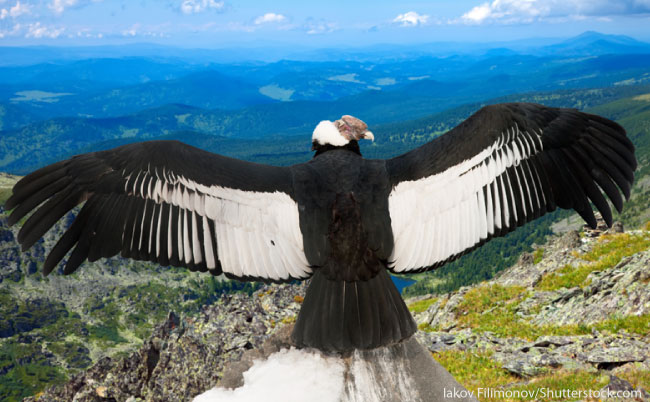
Only days before, I had thought of vultures as abhorrent creatures. I had come for the mountains, nothing more. Yet there I stood, utterly captivated by their majestic magnetism. As the emblem of the Andean mountains, I realised that the condor shares many qualities with the peaks and gorges that they inhabit. Magnificent in size and magnificent in spirit, both bird and mountain dominate the Peruvian landscape in equal measure.
All we can do is look on in wonder.
By Jo Walker
Jo Walker is a travel writer by heart, with many years of globetrotting under her belt. She is also a poet and motivational blogger. She can be contacted via her blog: Little Maverick.

